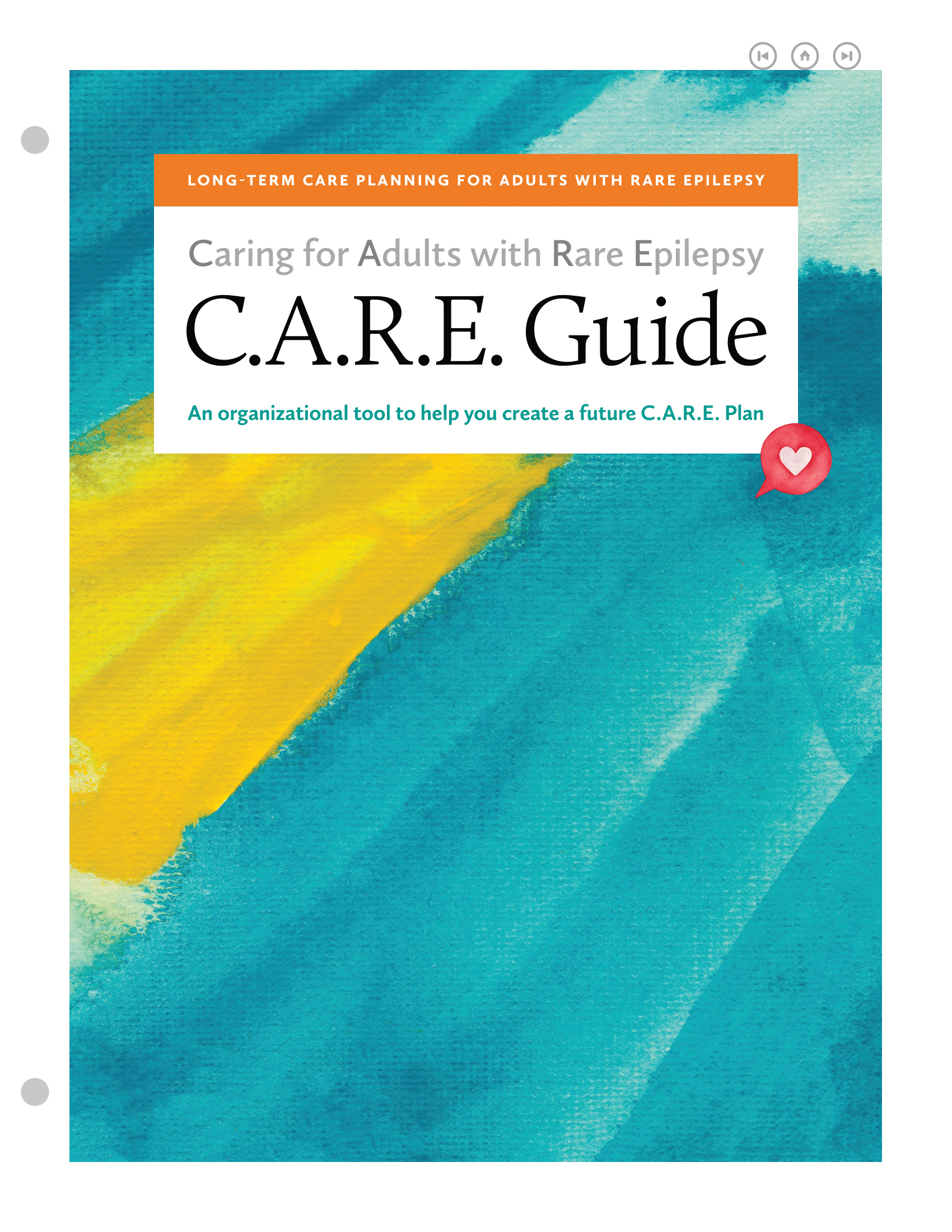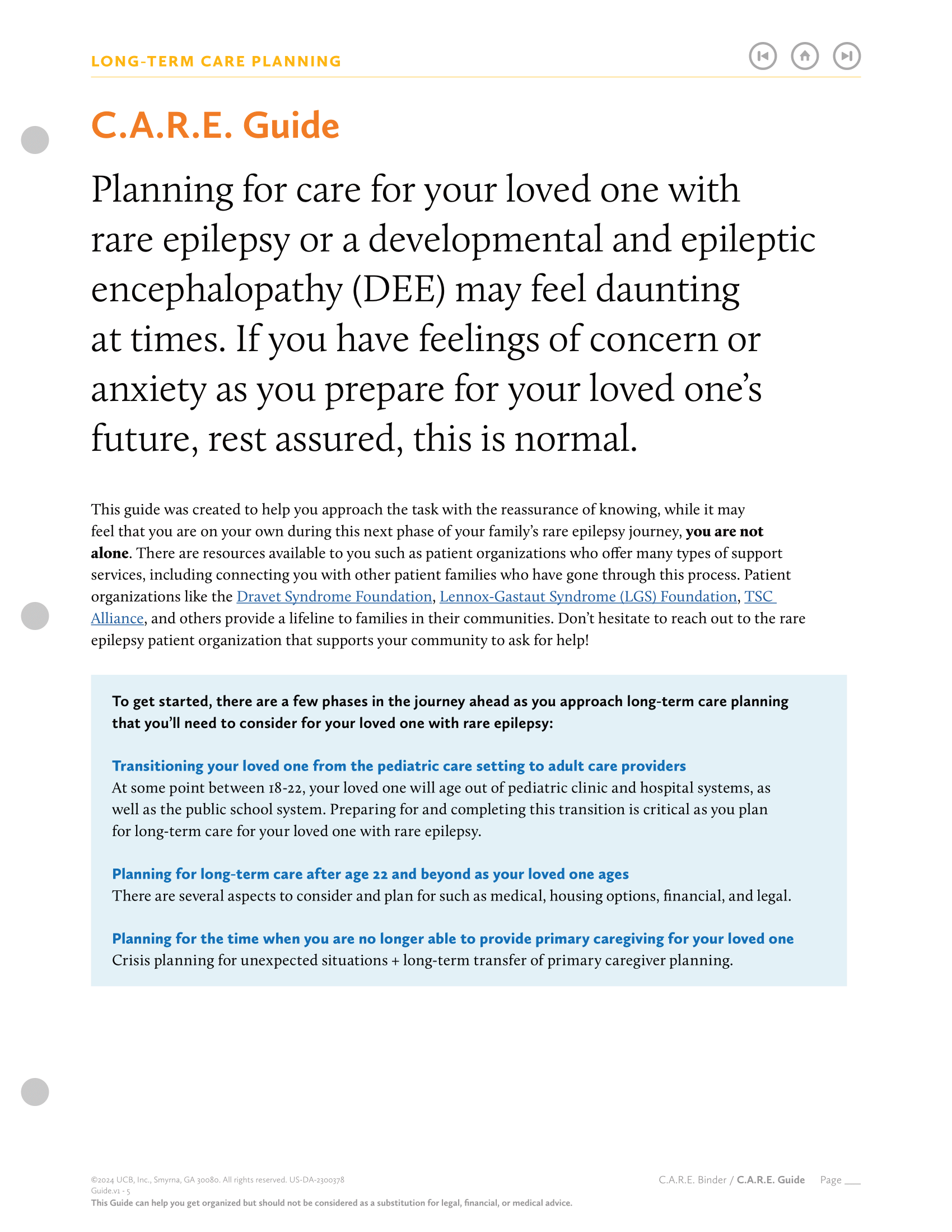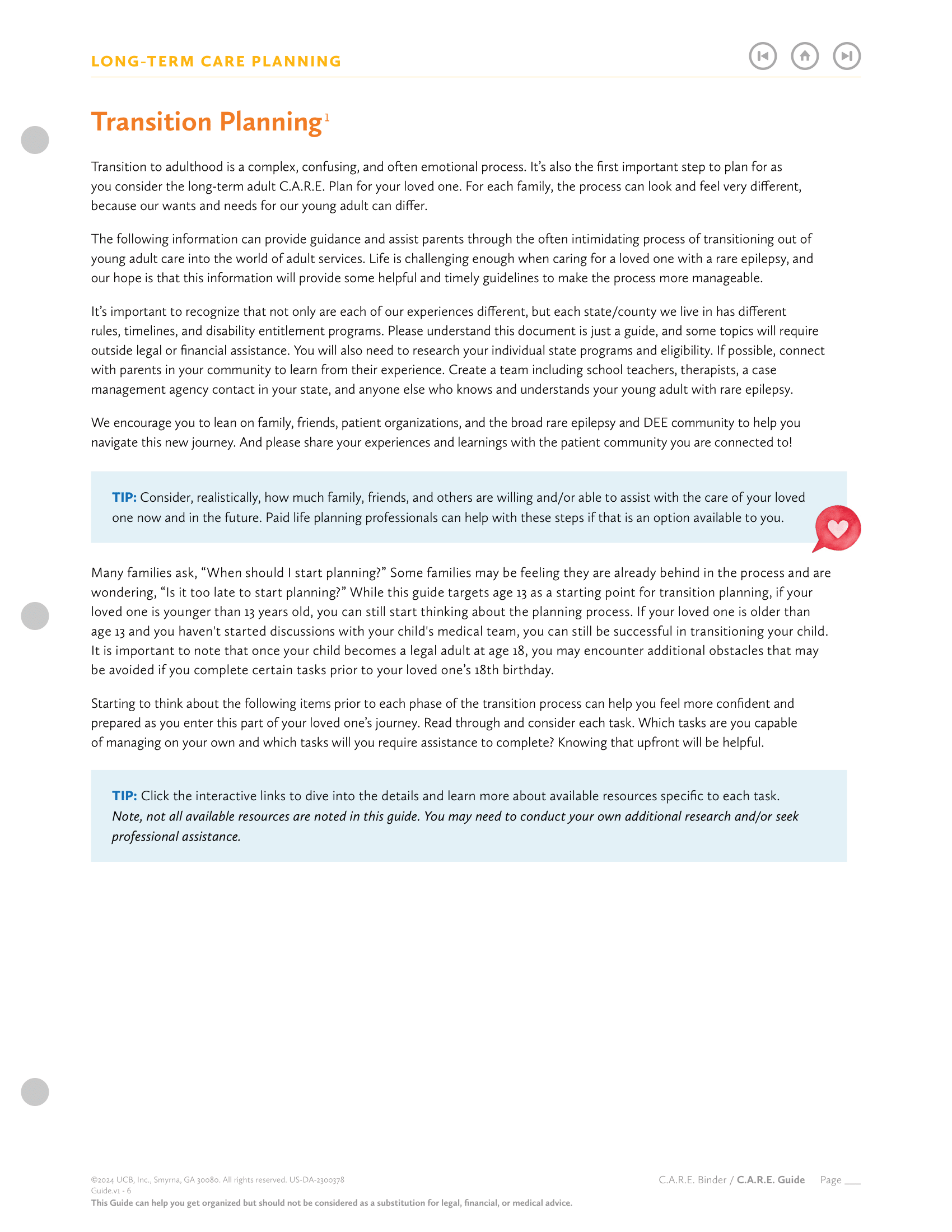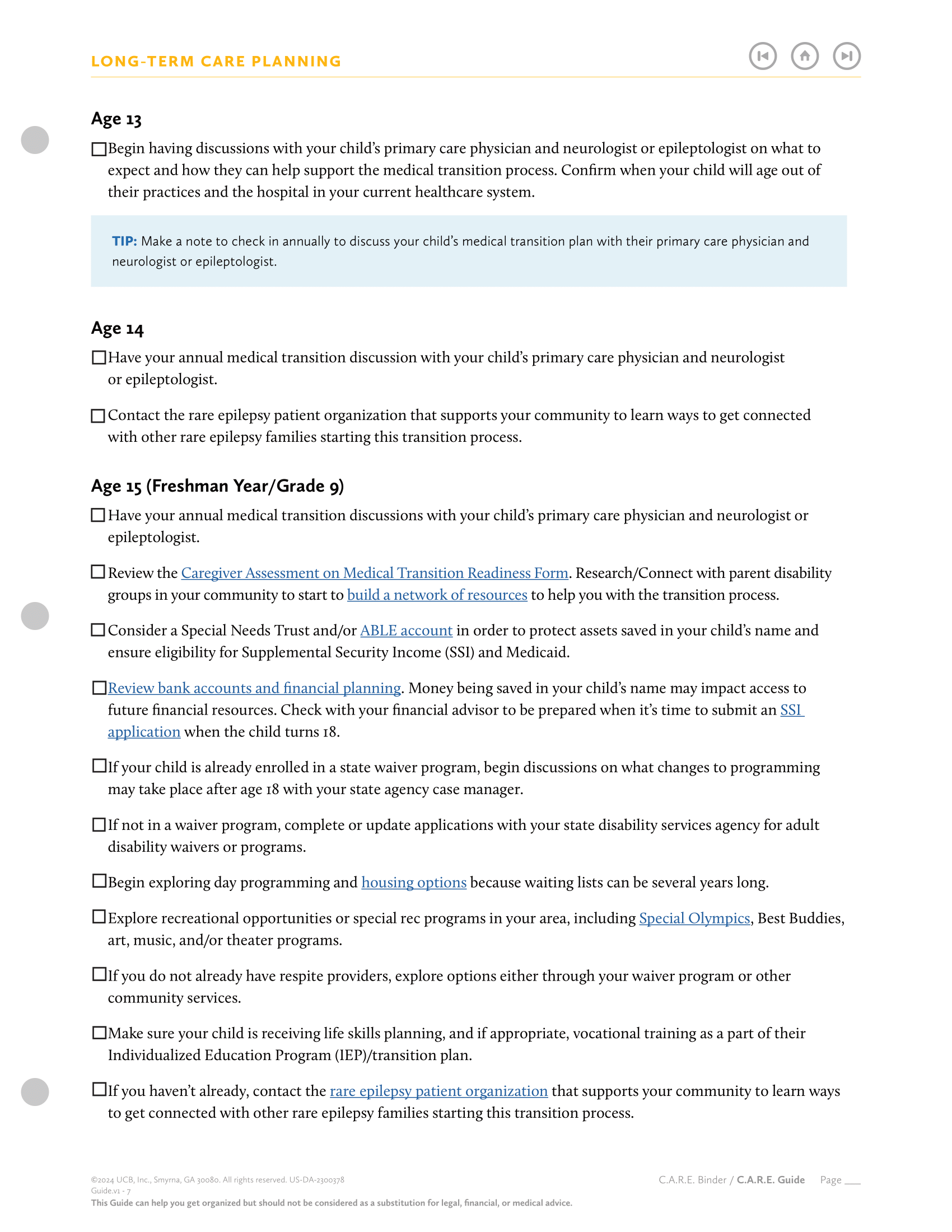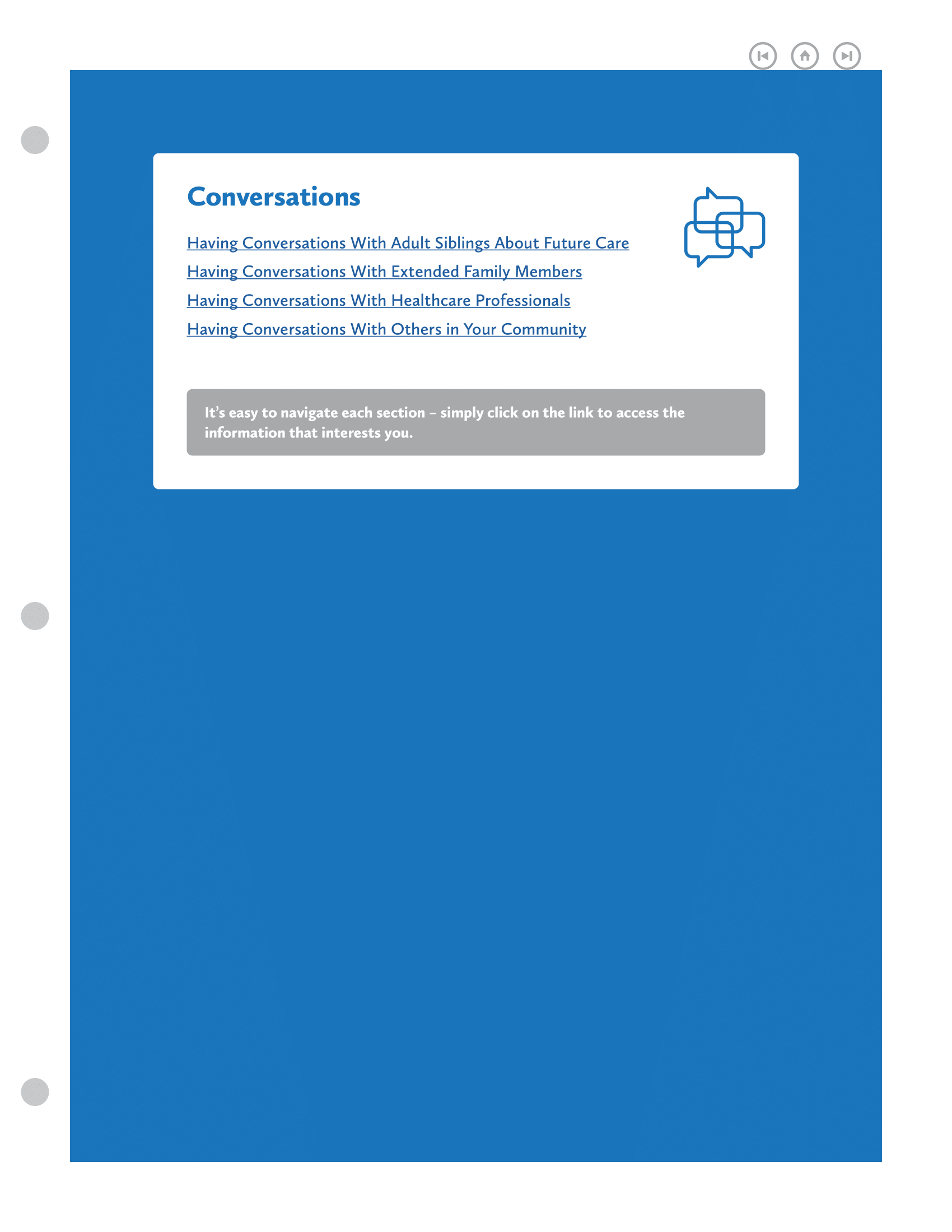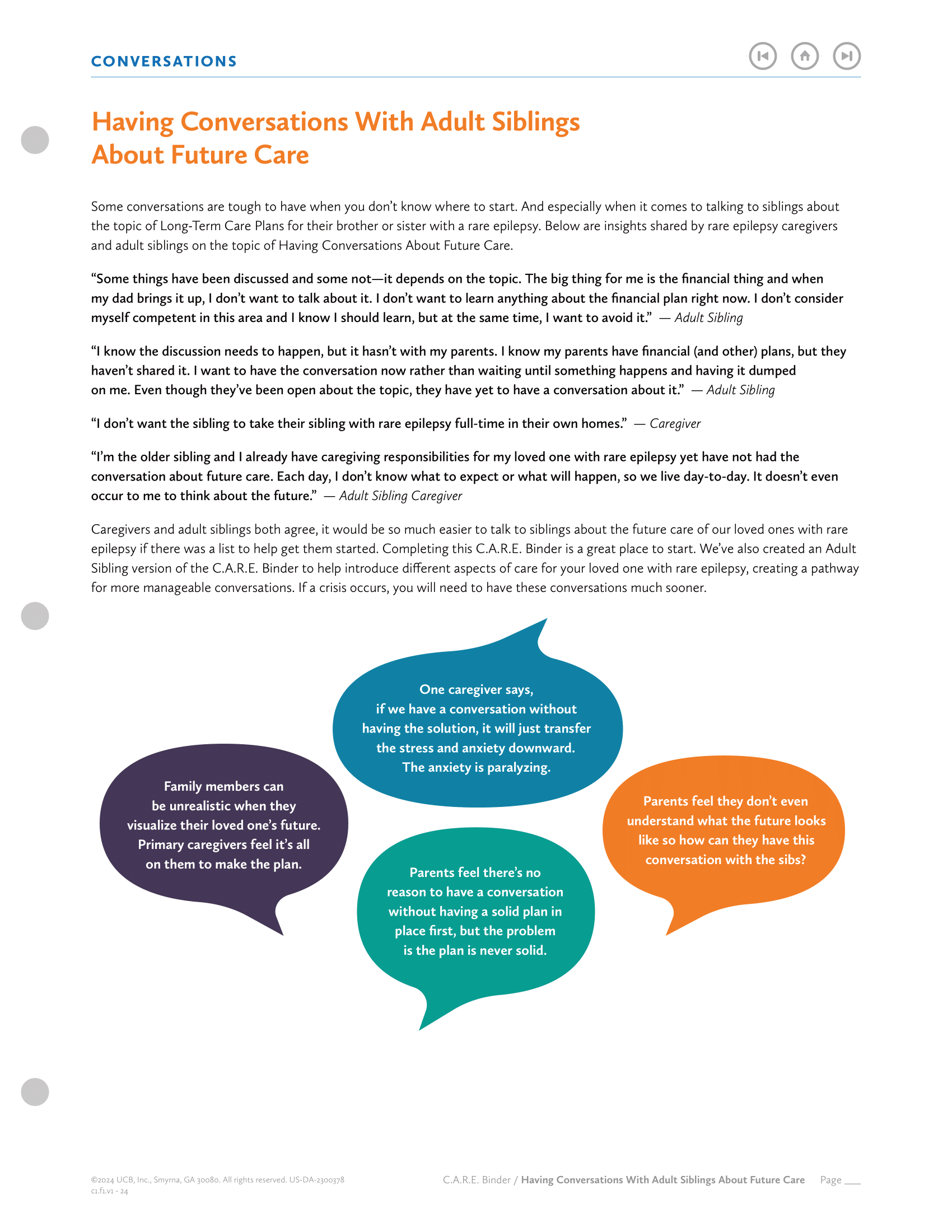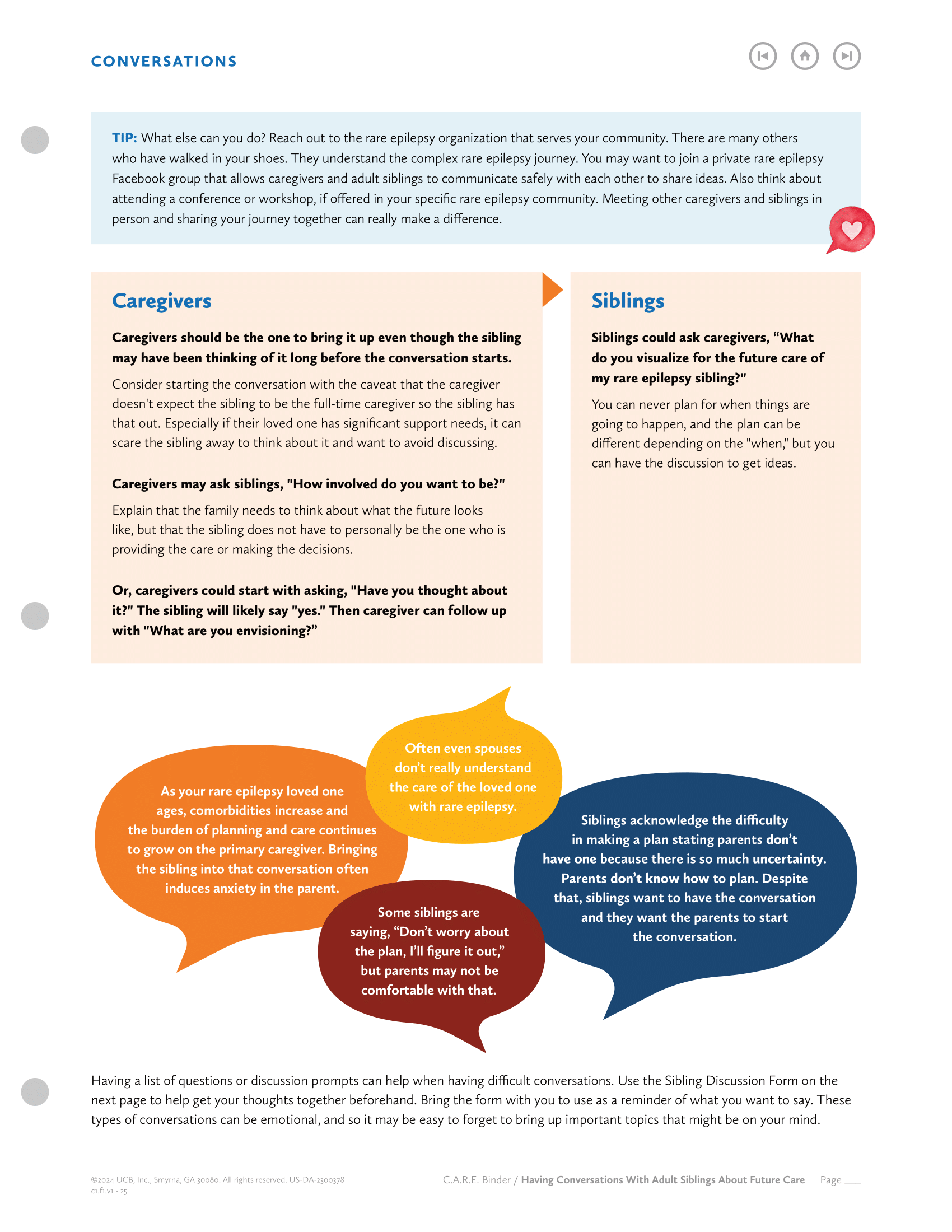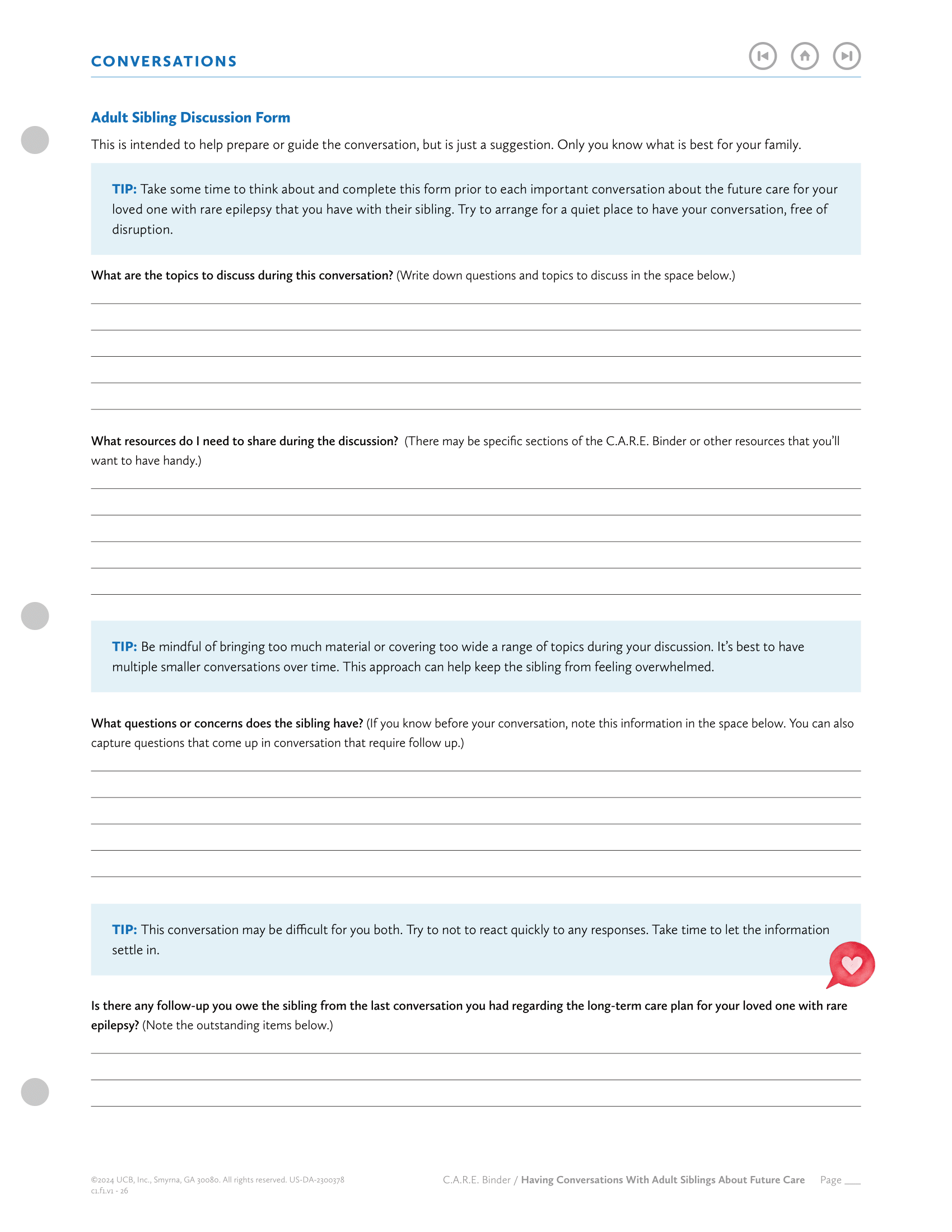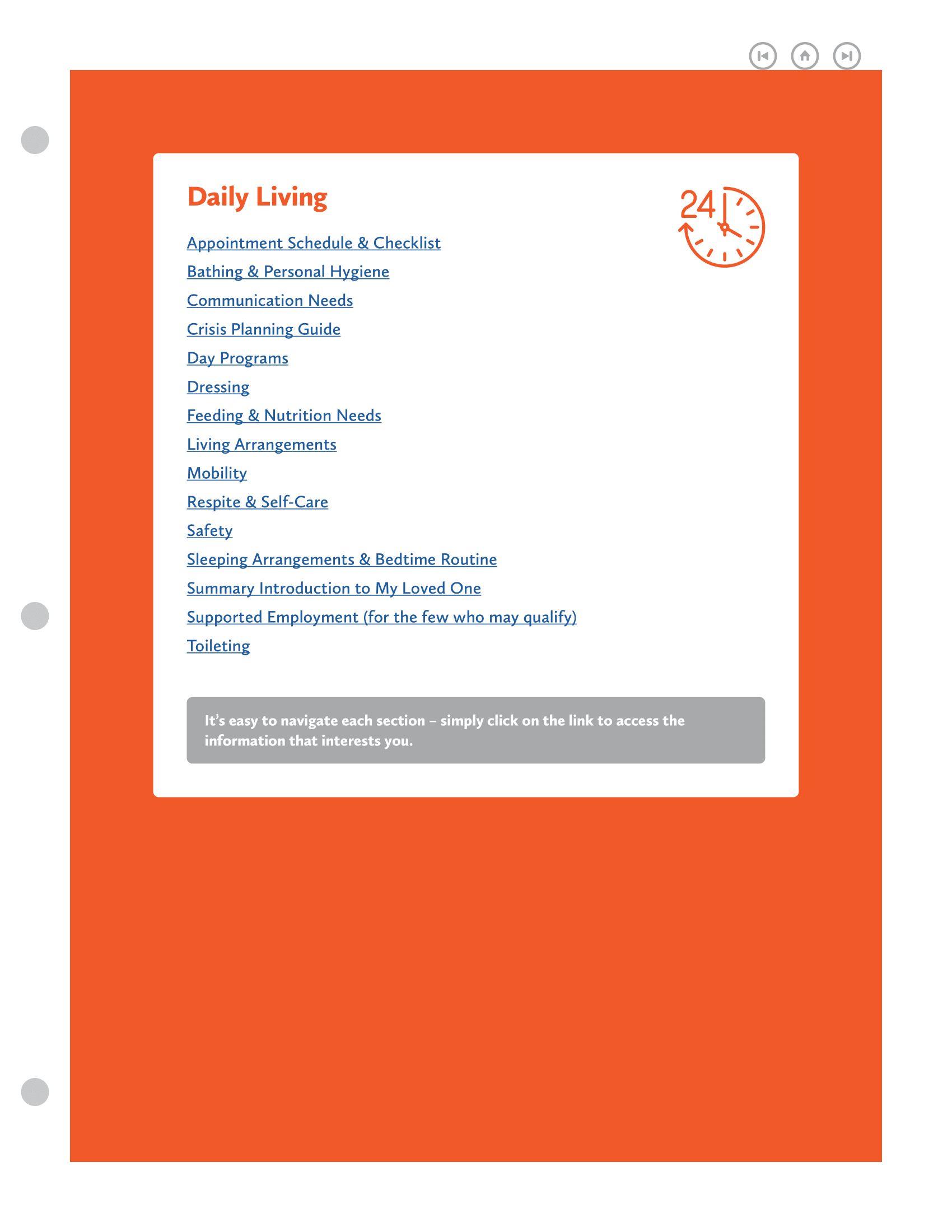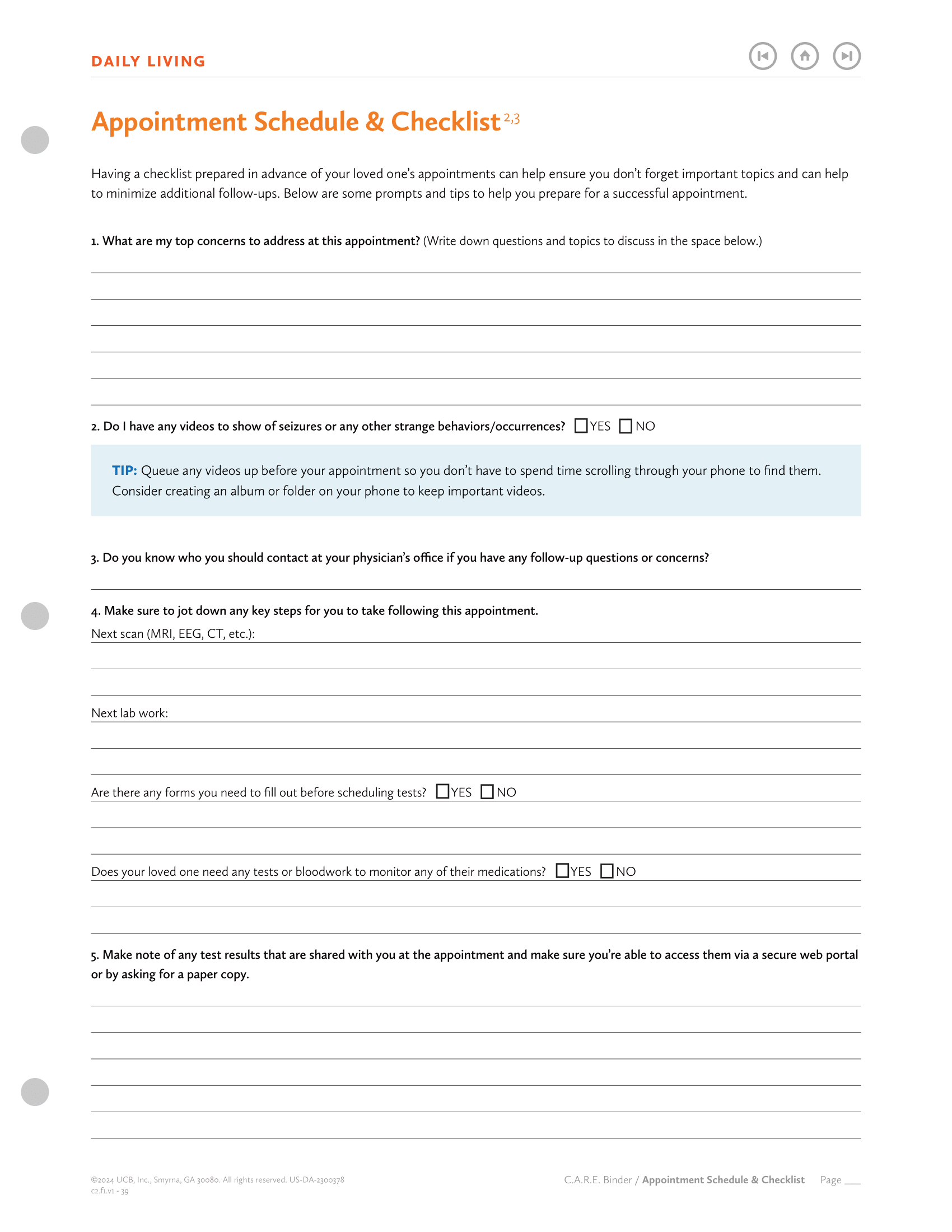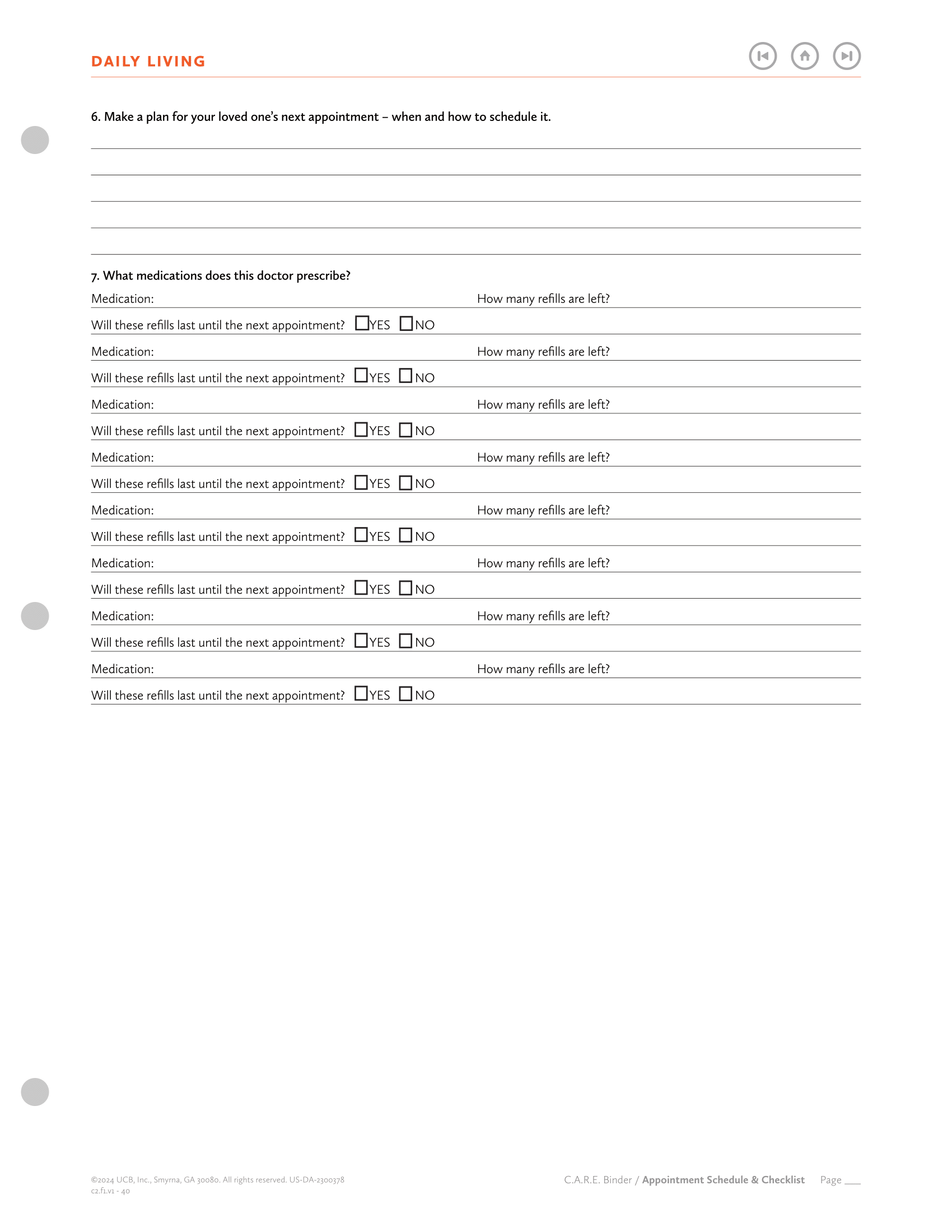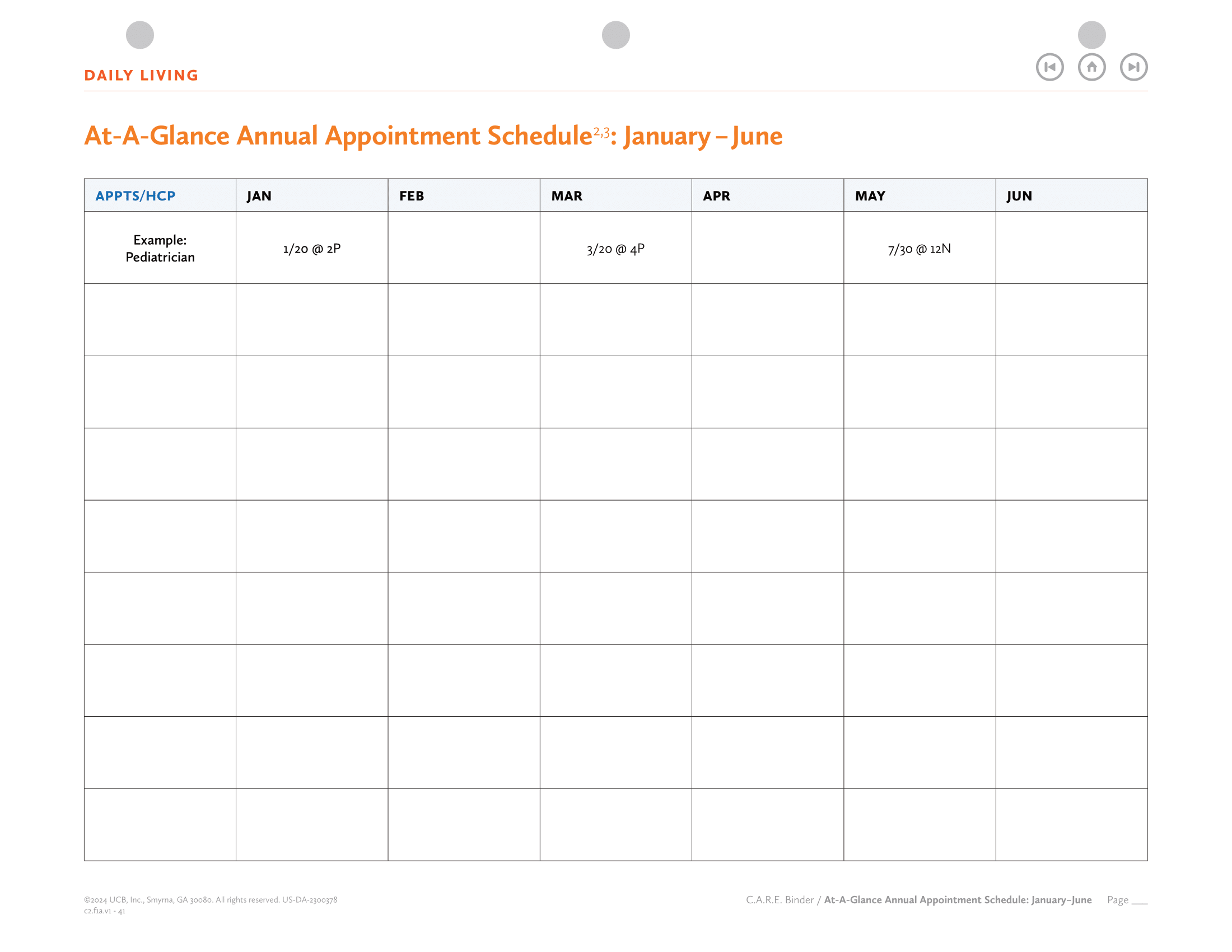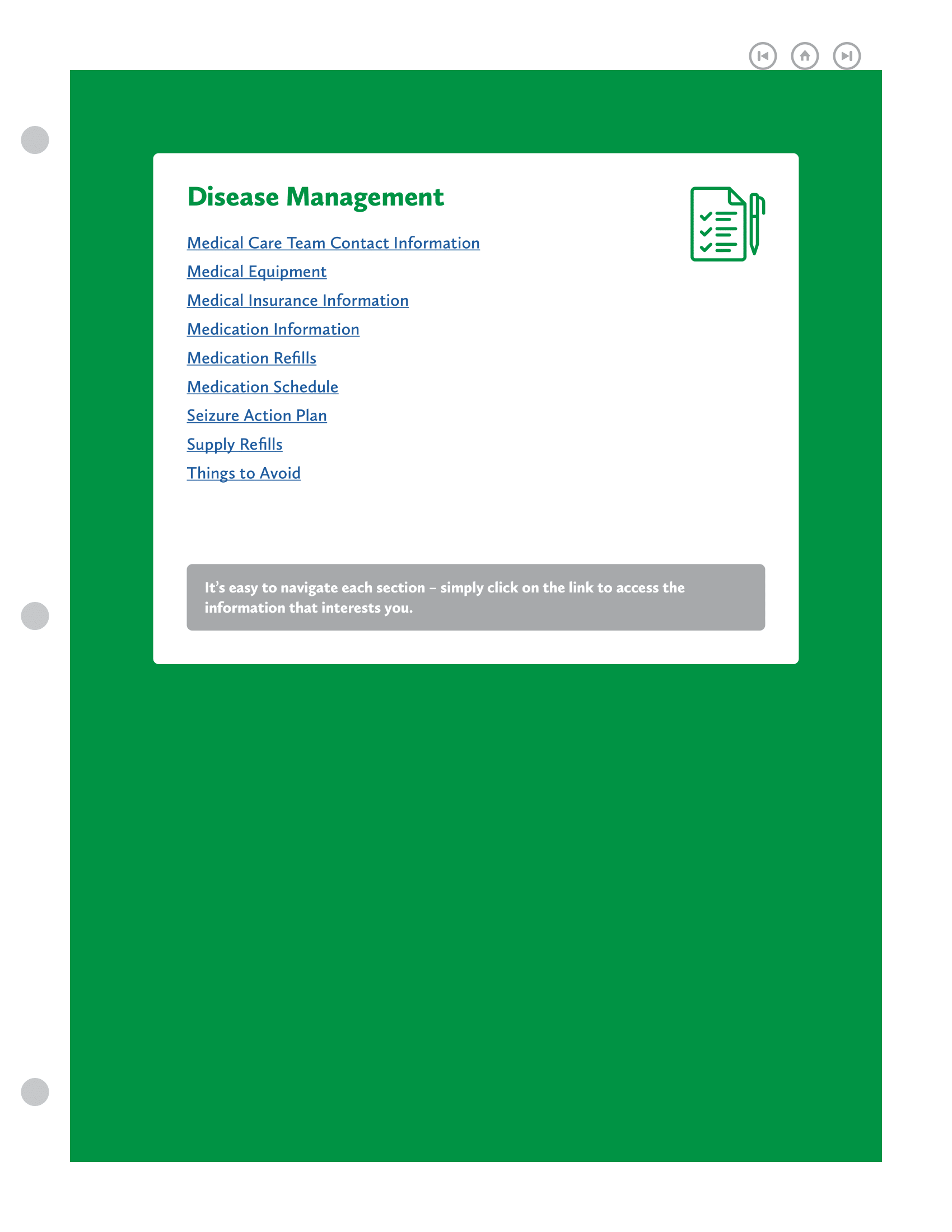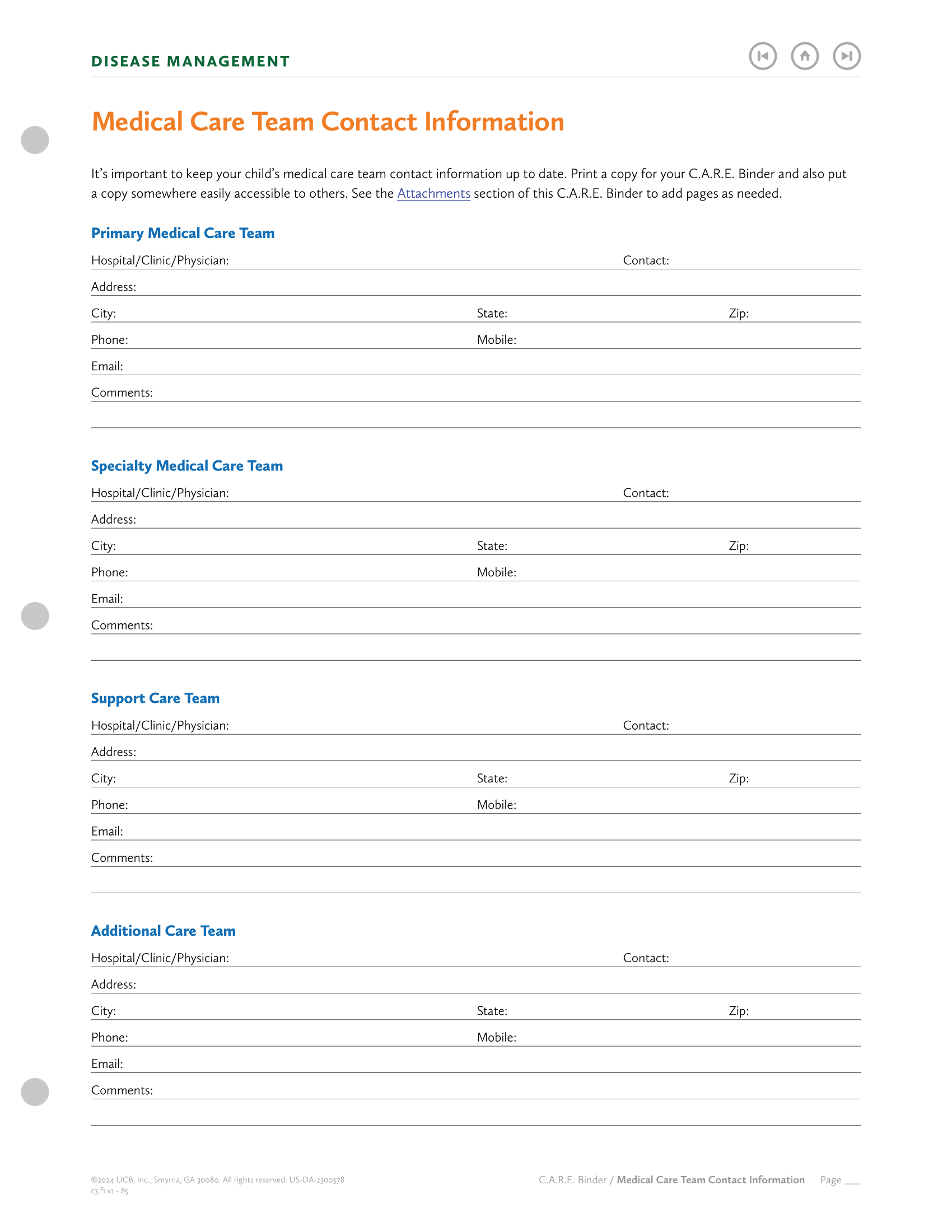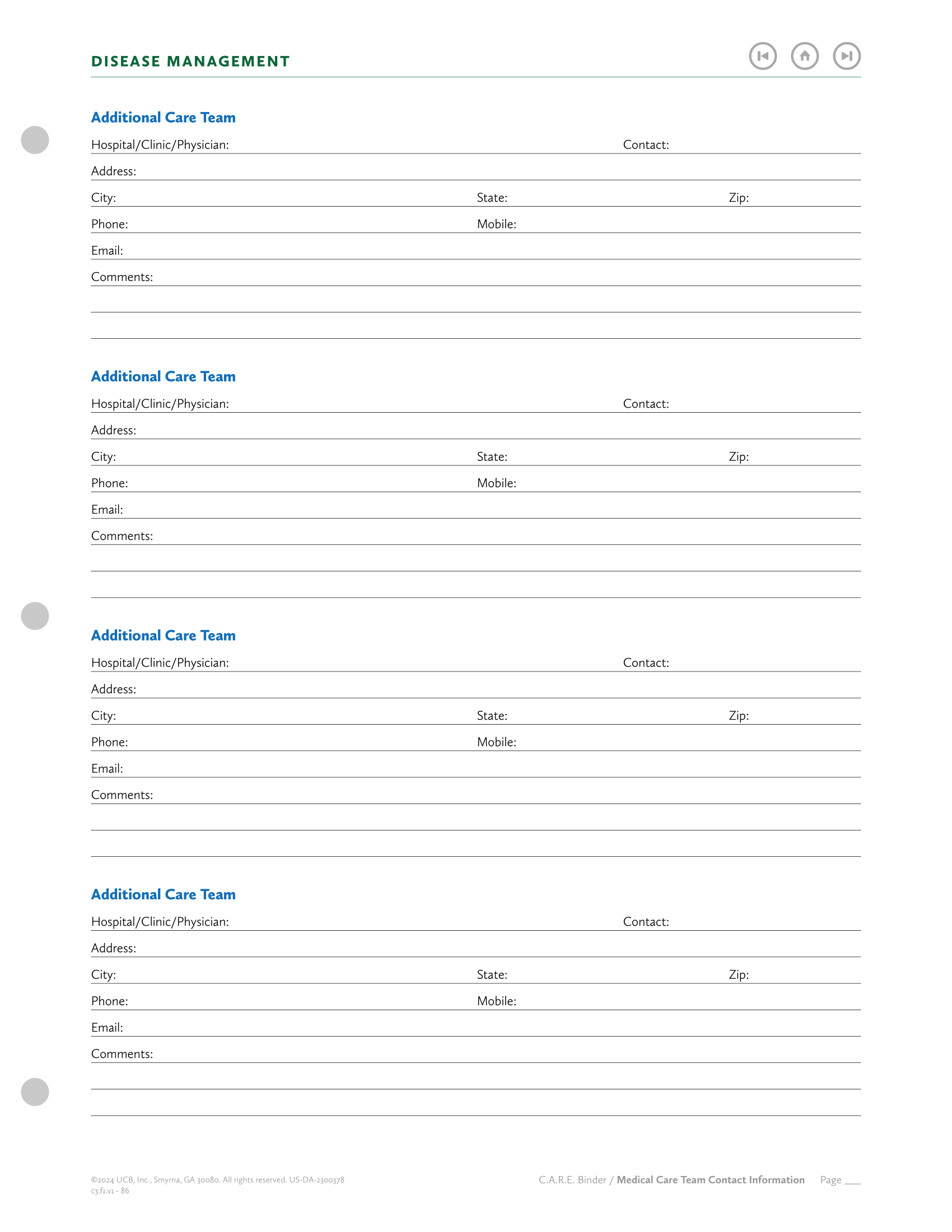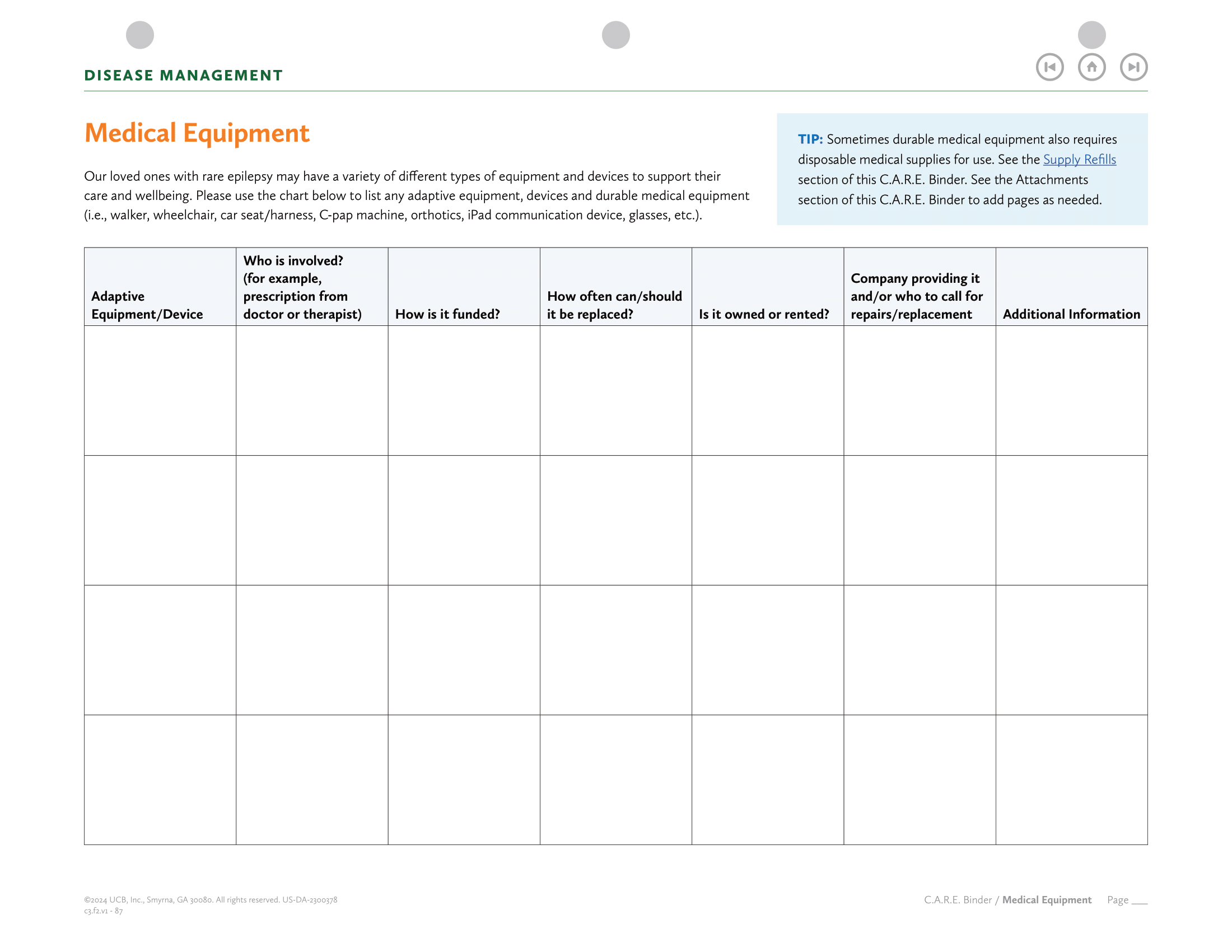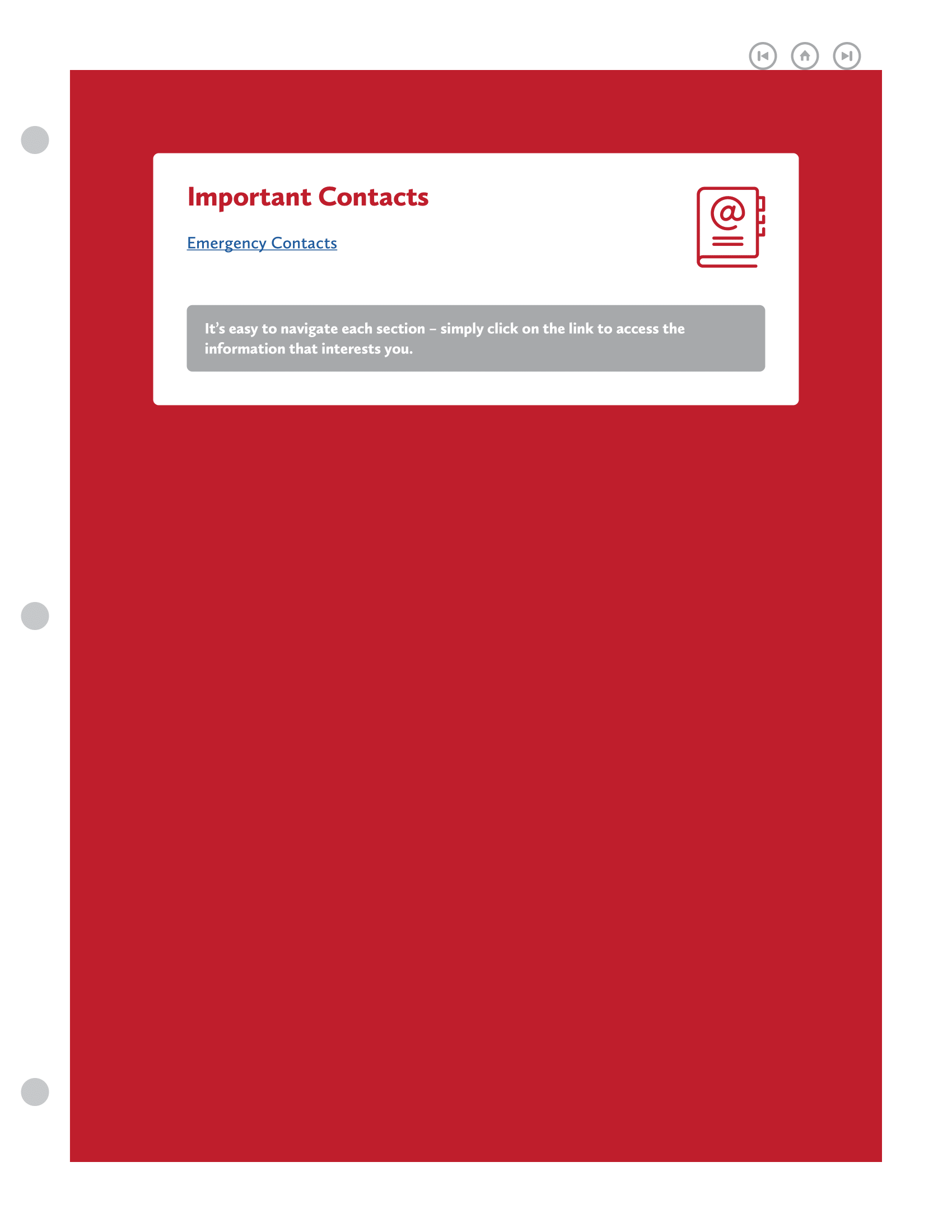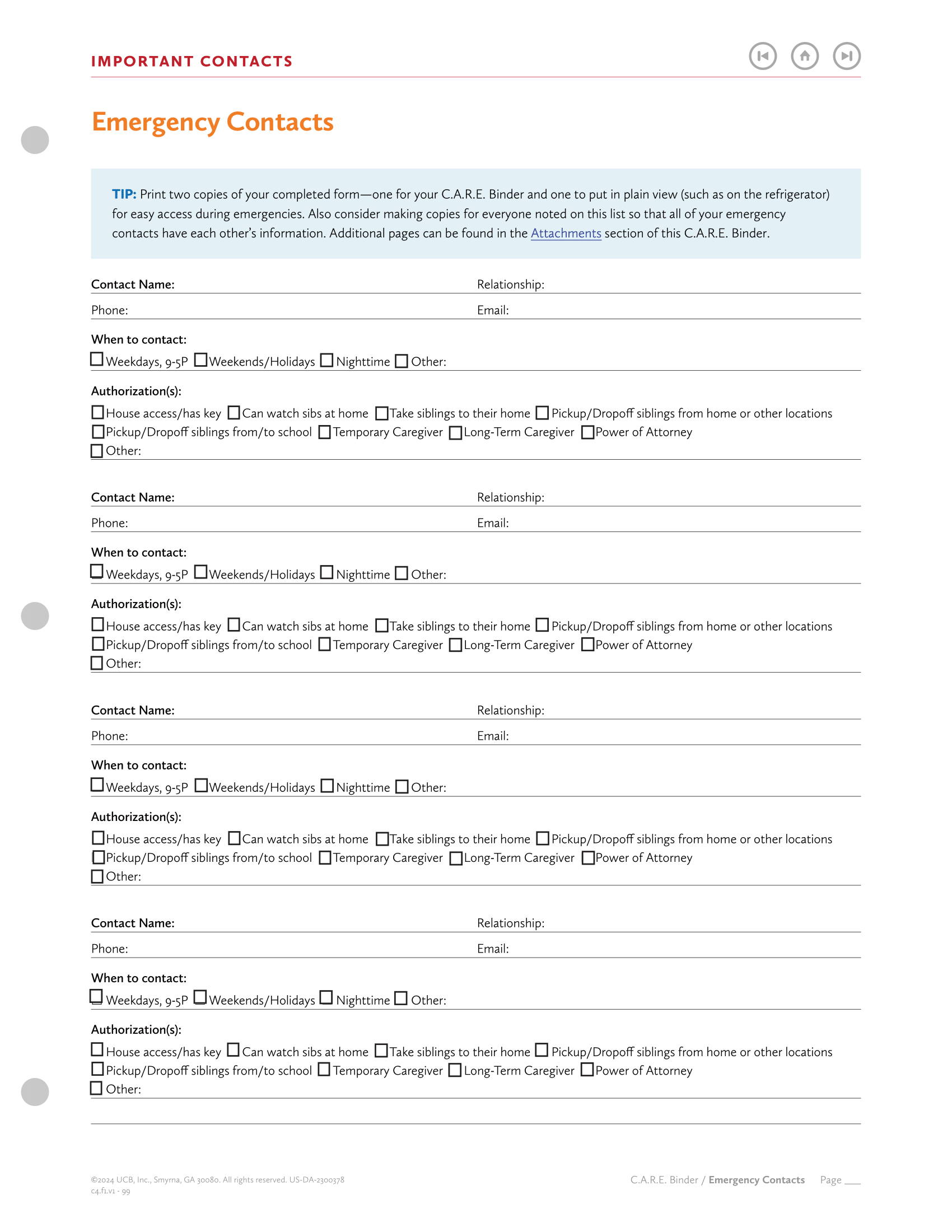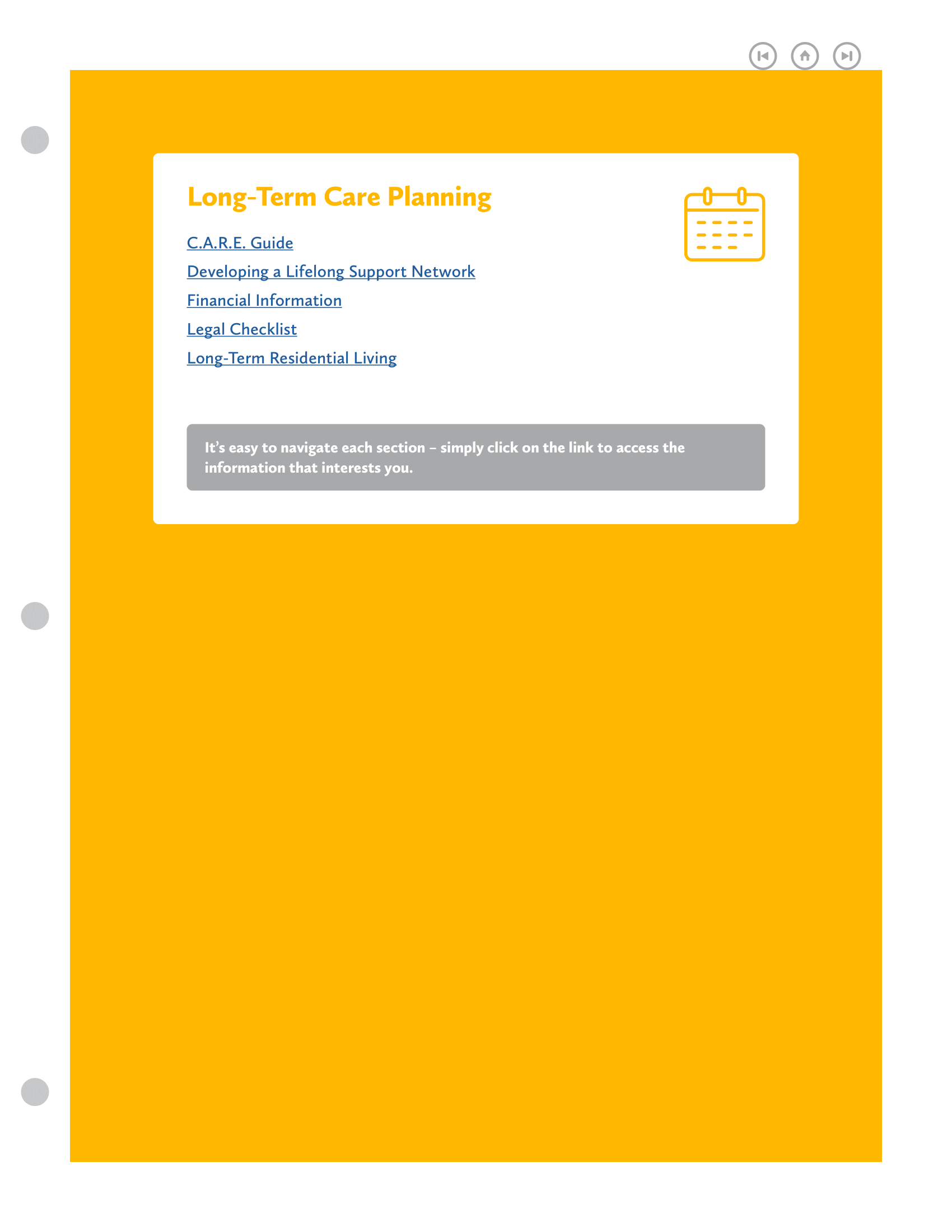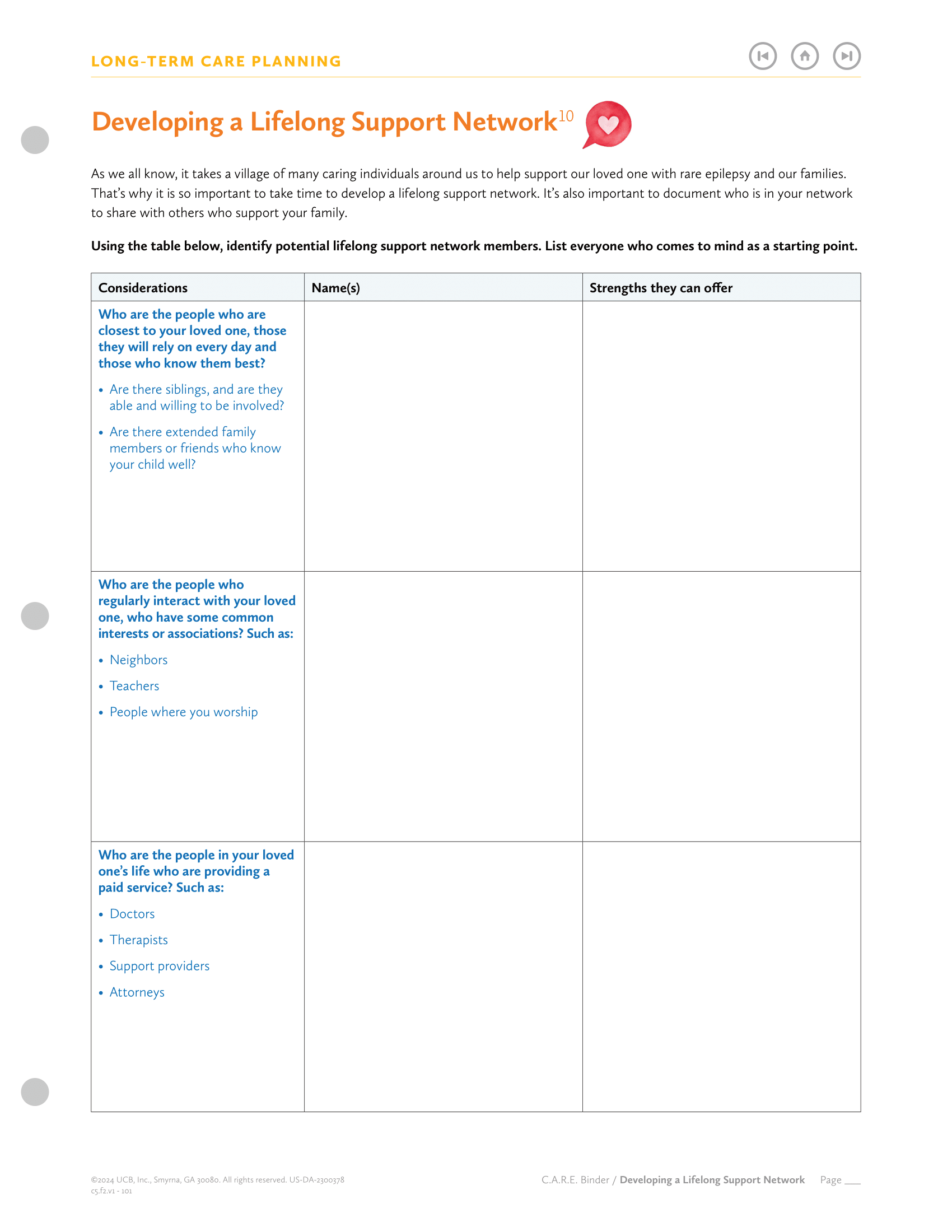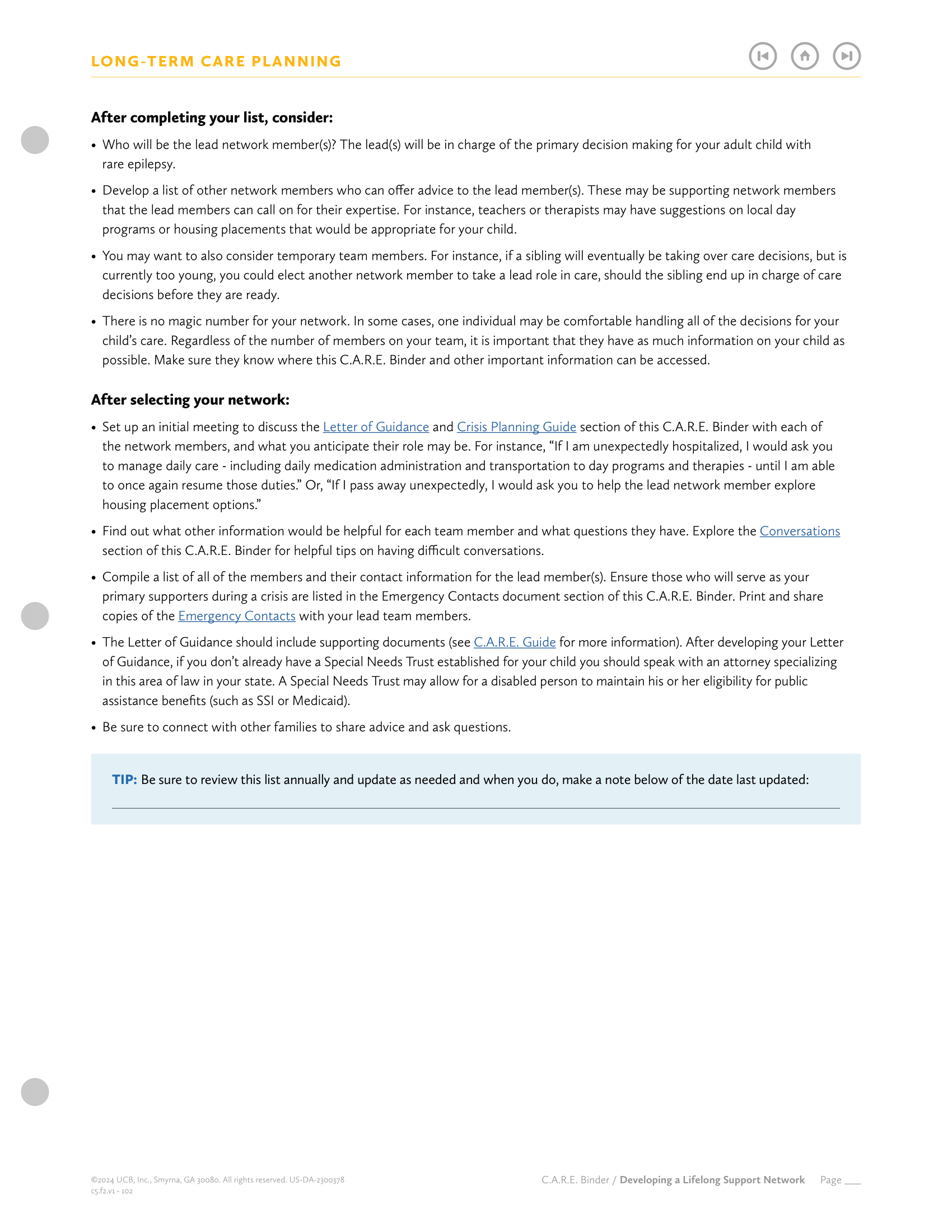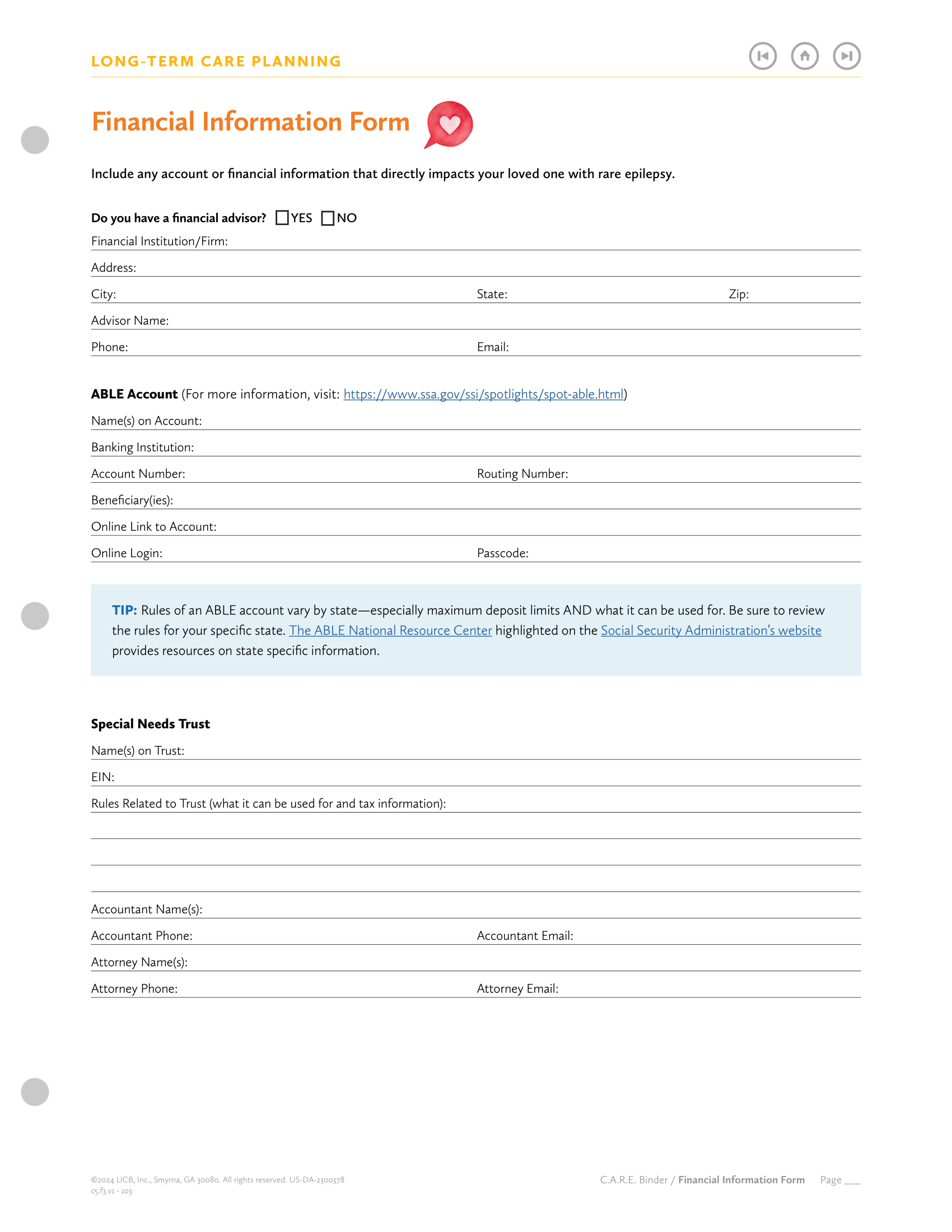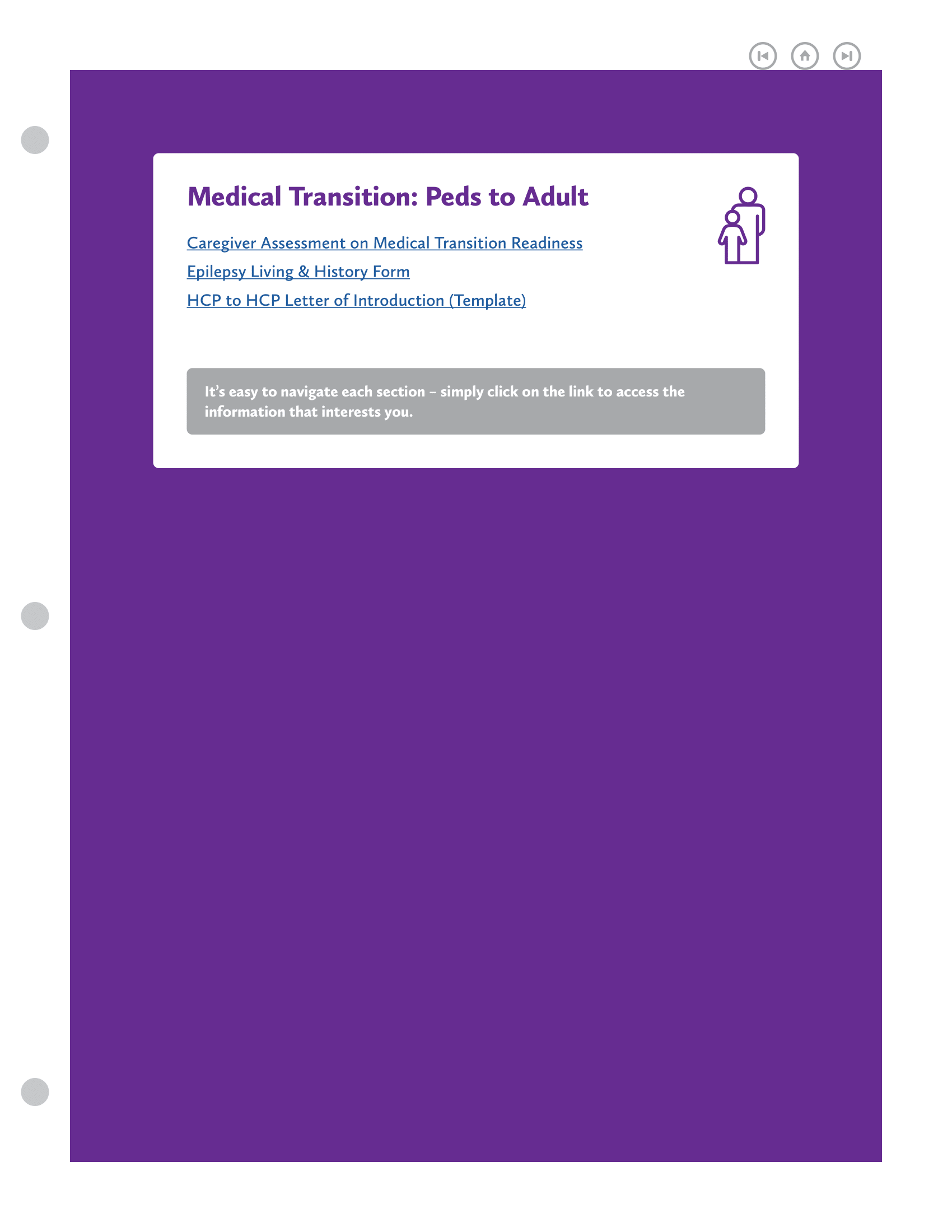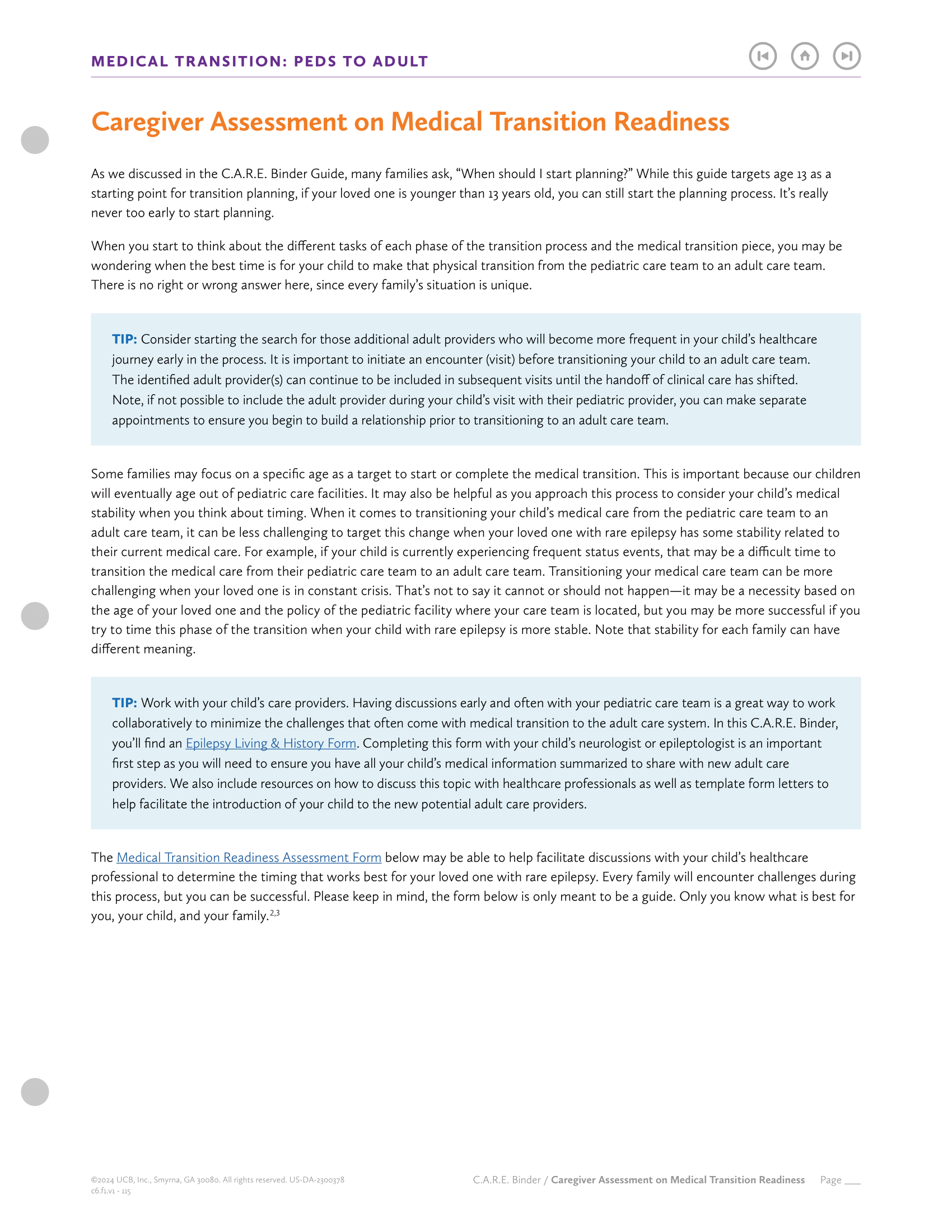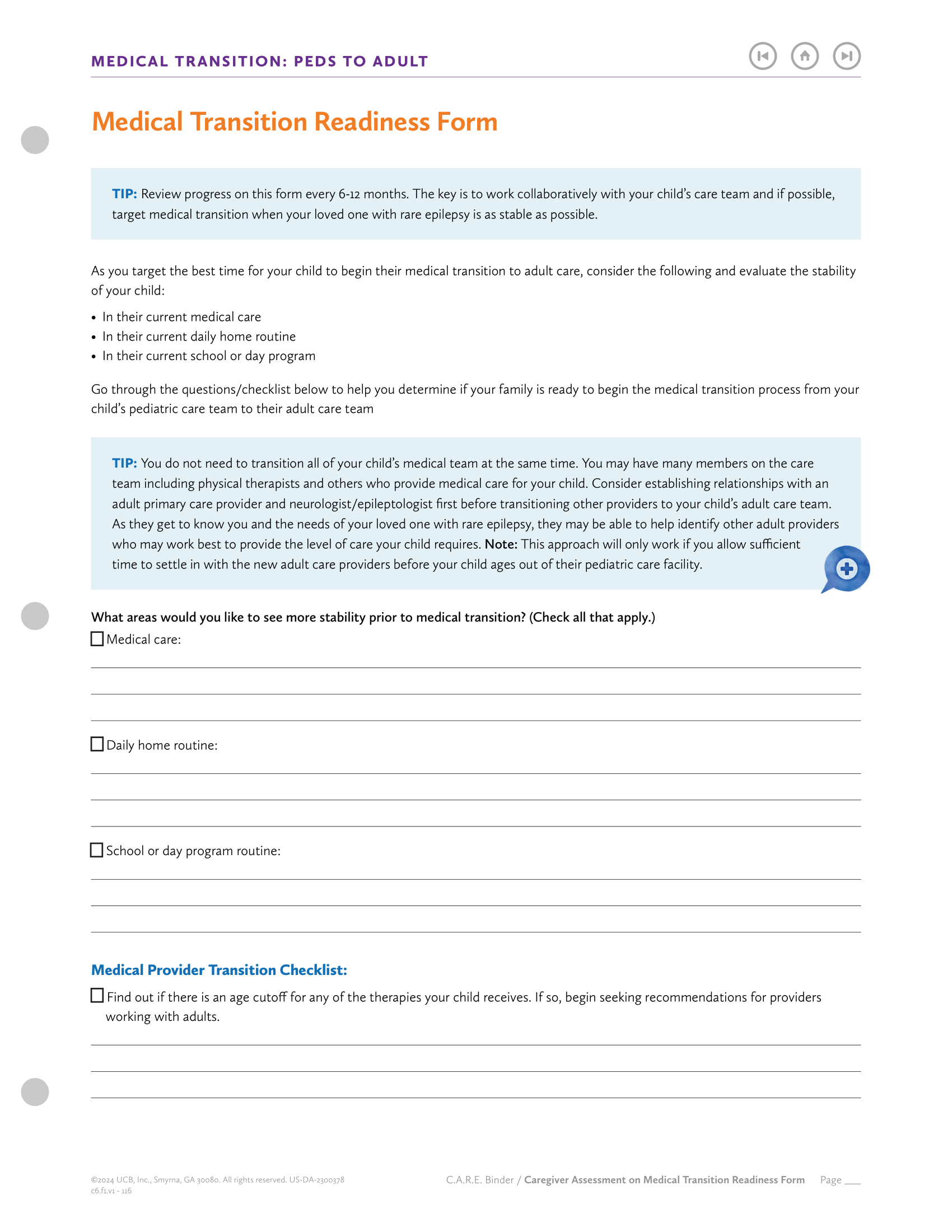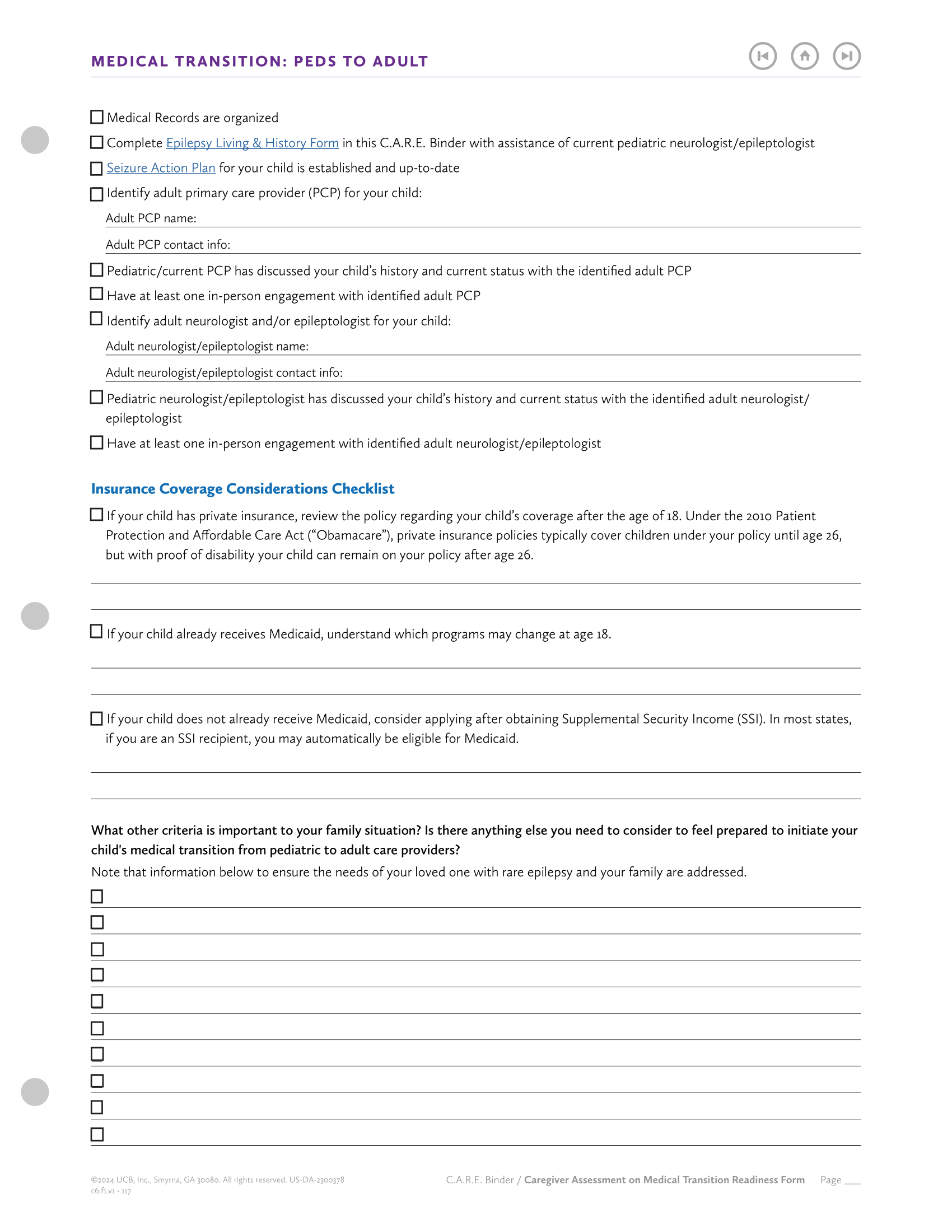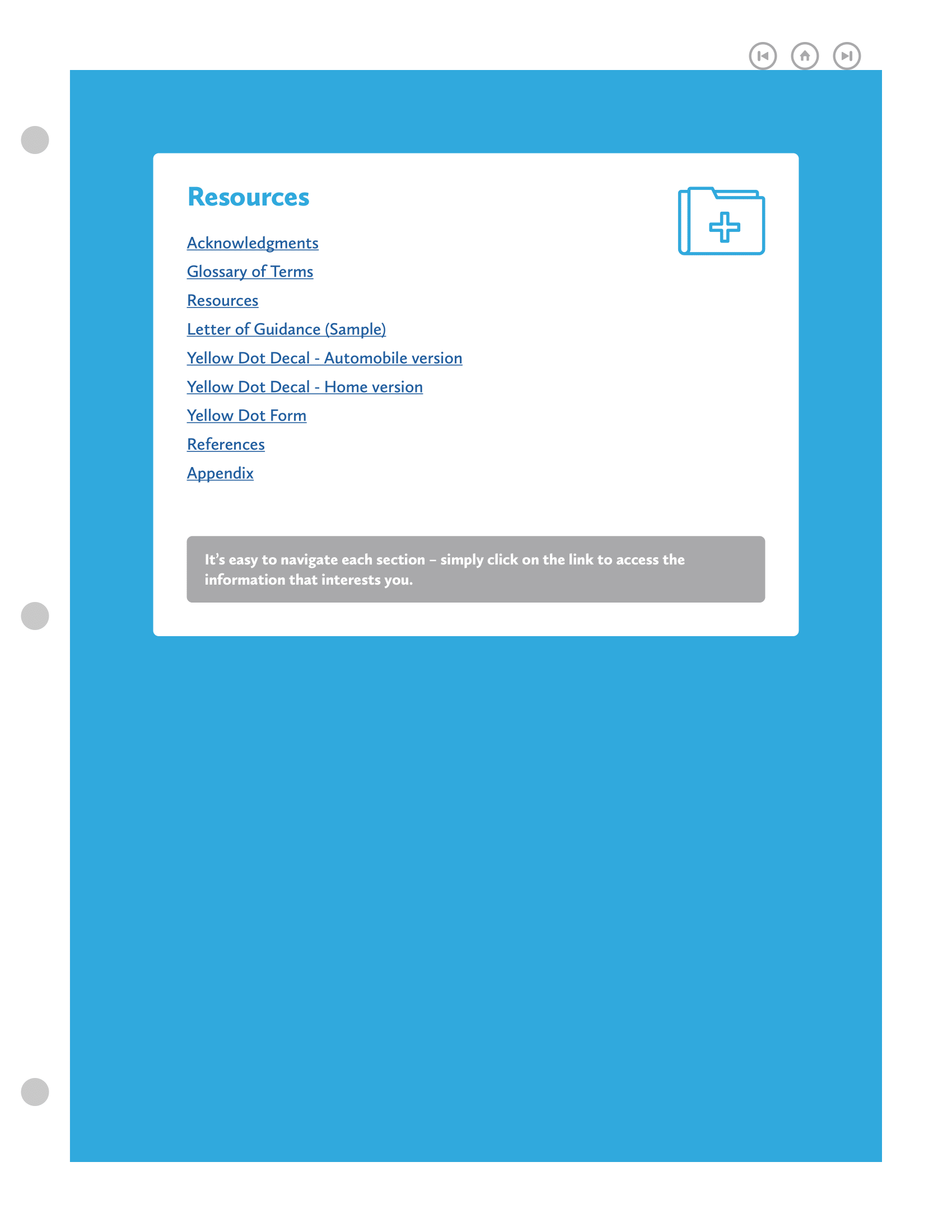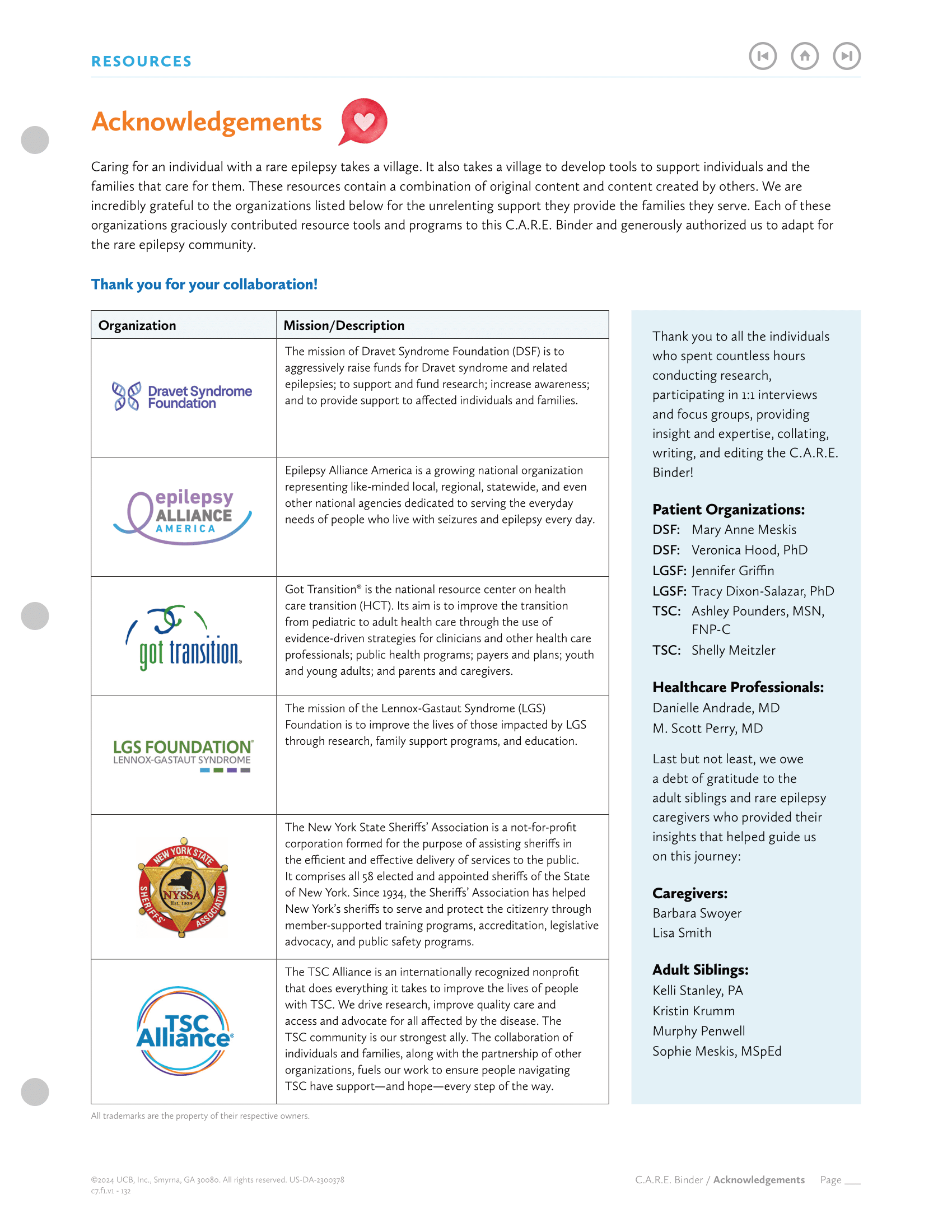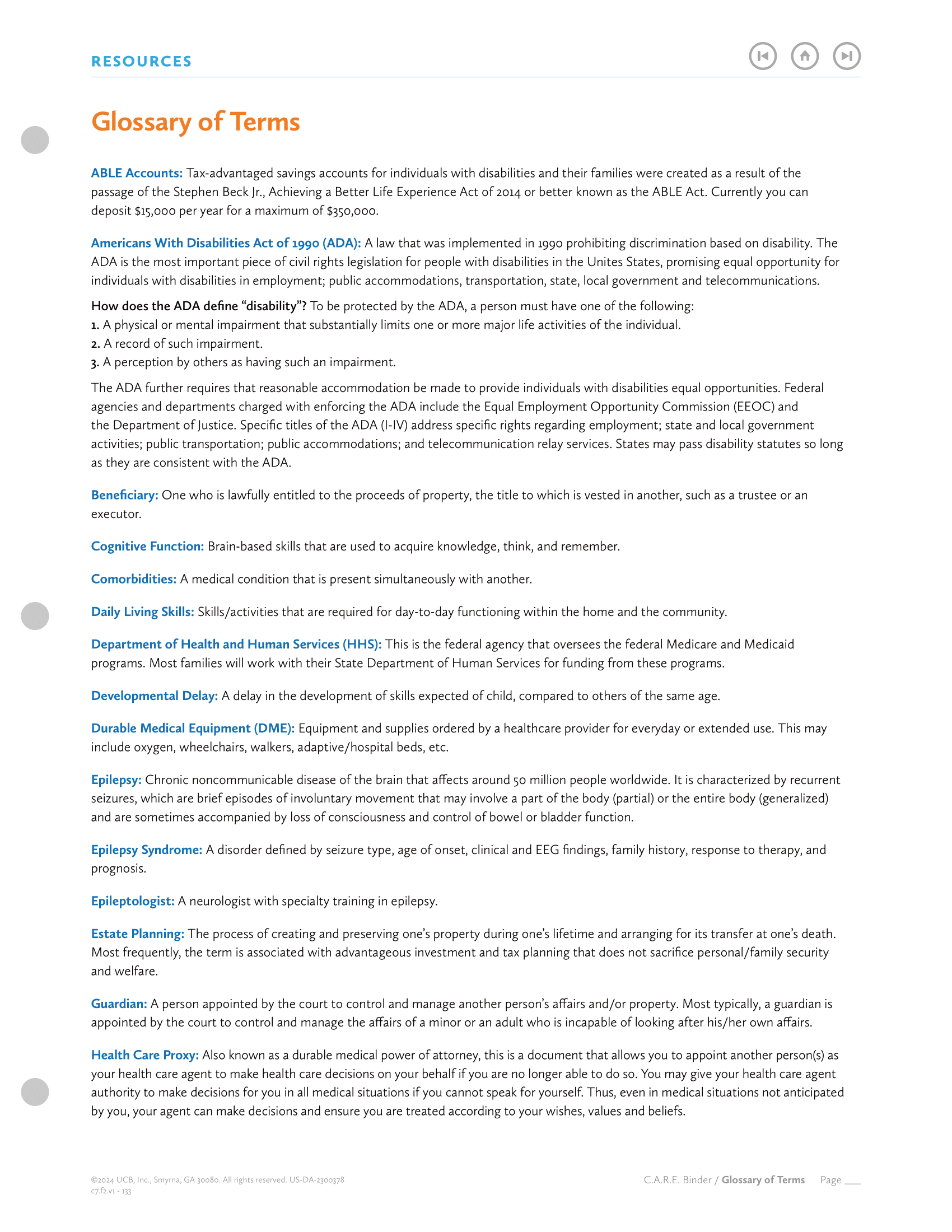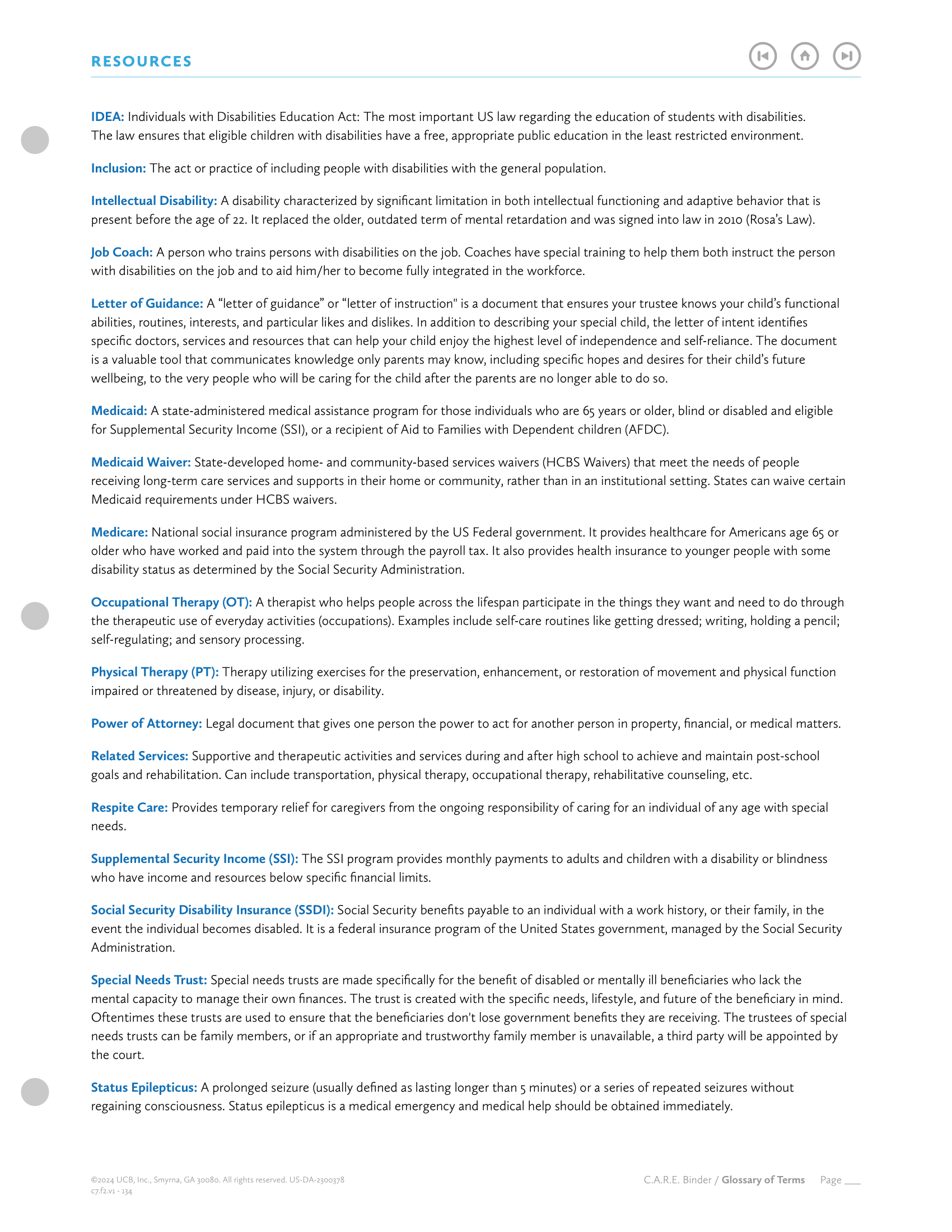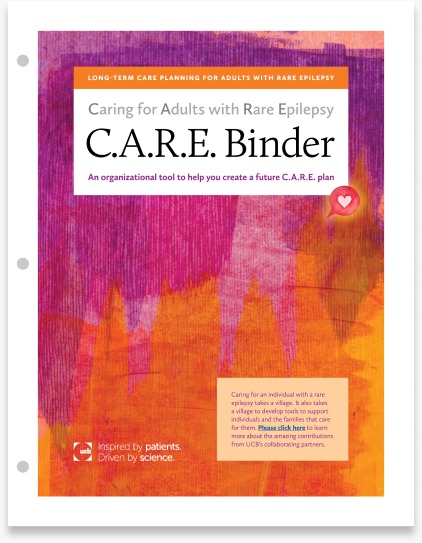The C.A.R.E. Binder is a resource for families who are Caring for Adults with a Rare Epilepsy.
This interactive, fillable PDF resource has been created to support families as they begin to work through long‐term adult care planning for their loved one with a rare epilepsy. It can guide you through some of the challenges families face as their loved one ages into adulthood.
There are resources available to you such as patient organizations who offer many types of support services, including connecting you with other patient families who have gone through this process. Rare patient organizations like the Dravet Syndrome Foundation, Lennox‐Gastaut Syndrome (LGS) Foundation, TSC Alliance, and others provide a lifeline to families in their communities.
Don’t hesitate to reach out to the rare epilepsy patient organization that supports your community to ask for help! We hope you find these tools helpful!
Preview the C.A.R.E. Guide
Many rare epilepsy families don’t know where to begin. Starting with the C.A.R.E. Guide will provide you with a road map as you navigate this journey.
After downloading, navigate the Binder with these helpful tips
- You may use the fillable fields within the electronic PDF and update the data whenever your child’s information changes.
- You can save these files on your personal computer, handheld or other device. Conveniently formatted to fit a three‐ring binder or other file system, you may also choose to print your completed documents and forms to help stay organized.
- Throughout the C.A.R.E. Binder, wherever you see this heart icon, click to view a short video message from someone who has walked in your shoes.
- Throughout the C.A.R.E. Binder, whenever you see this HCP icon, you can click on it to view a short video message from a healthcare professional who cares for families just like yours.
Preview the Binder
The C.A.R.E. Binder is organized by category. Click on a link below to jump to a preview of each section of the Binder.
- Conversations
- Daily Living
- Disease Management
- Important Contacts
- Long Term Care Planning
- Medical Transition — PED to Adult
- Resources
CONVERSATIONS
Some conversations are tough to have when you don’t know where to start. This section provides helpful information when having conversations with healthcare professionals, family and your extended support network.
DAILY LIVING
Daily Living is complicated for rare epilepsy families. This section includes a wide range of topics including activities of daily living, safety, and crisis planning.
DISEASE MANAGEMENT
Managing your loved one’s rare epilepsy is complex and can frequently change. Topics such as seizure action plans, medication and insurance management are included in this section.
IMPORTANT CONTACTS
It’s not only important to have an easily accessible list of important contacts, identifying the role of each person will be critical for care and crisis planning.
LONG-TERM PLANNING
Thinking about the financial and legal aspects of your loved one’s care is important and should be planned prior to your loved one turning 18 years old. This section includes information to help you prepare for these tasks and provides guidance on evaluating alternative living arrangements as your loved one ages.
MEDICAL TRANSITION—PED TO ADULT
When you start to think about the different tasks of each phase of the transition process and the medical transition piece, you may be wondering when is the best time for your child to make that physical transition from the pediatric care team to an adult care team. This section provides guidance on how to work with your loved one’s care team during this process.
RESOURCES
This section provides additional information you may find helpful as you navigate long‐term care planning for your loved one with rare epilepsy.
